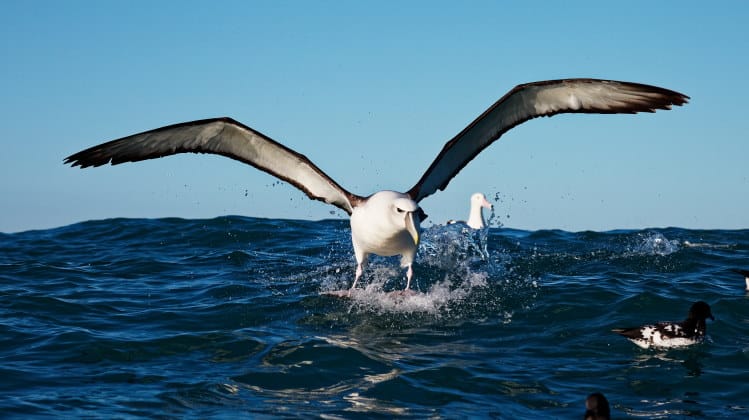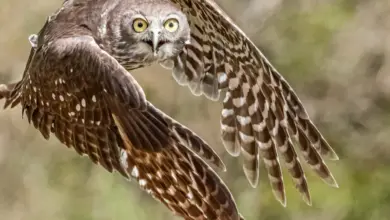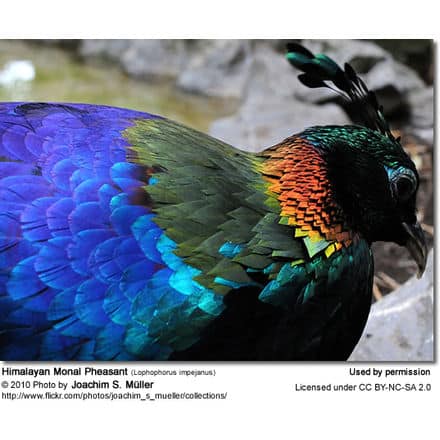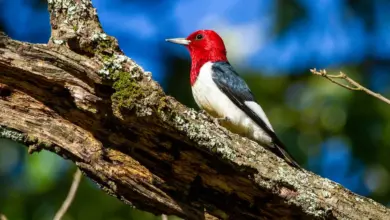Do Muscovy Ducks Mate for Life? Muscovy Duck Mating Behavior
If you are planning on getting a muscovy duck as a pet, you need to know about their mating behavior – for example, do muscovy ducks mate for life, or do they mate with multiple partners? Let’s find out!
The mating rituals of birds are vastly different from that of mammals.
For starters, most birds do not have sexual organs. Instead, both male and female birds have cloacas.
The mating behavior of a Muscovy duck sits somewhere in the middle of birds and mammals.
Read on to discover the interesting mating behavior of Muscovy ducks.

Reproduction In Birds
Before we delve into the unusual mating behavior of the Muscovy duck (Cairina moschata), let’s first understand the reproduction of other bird species.
Unlike mammals, many bird species do not have specific sexual organs, such as a penis or vagina.
Instead, they have a cloaca.
A cloaca is a multifunctional opening that is used for both waste removal and reproduction.
Birds are not alone when it comes to cloacas. Reptiles, amphibians, cartilaginous fish, and some mammals all have them.
It is thought that 97% of described bird species have a cloaca.
Both male and female birds use their cloaca to mate.
Sperm from the male cloaca is transferred into the female cloaca, and internal fertilization begins.
This is often referenced to, rather romantically, as the “cloaca kiss.”
Evolutionarily speaking, this is a relatively primitive form of reproduction. A potential trait shared with the bird ancestors: dinosaurs.
So, where do Muscovy ducks fit into this?
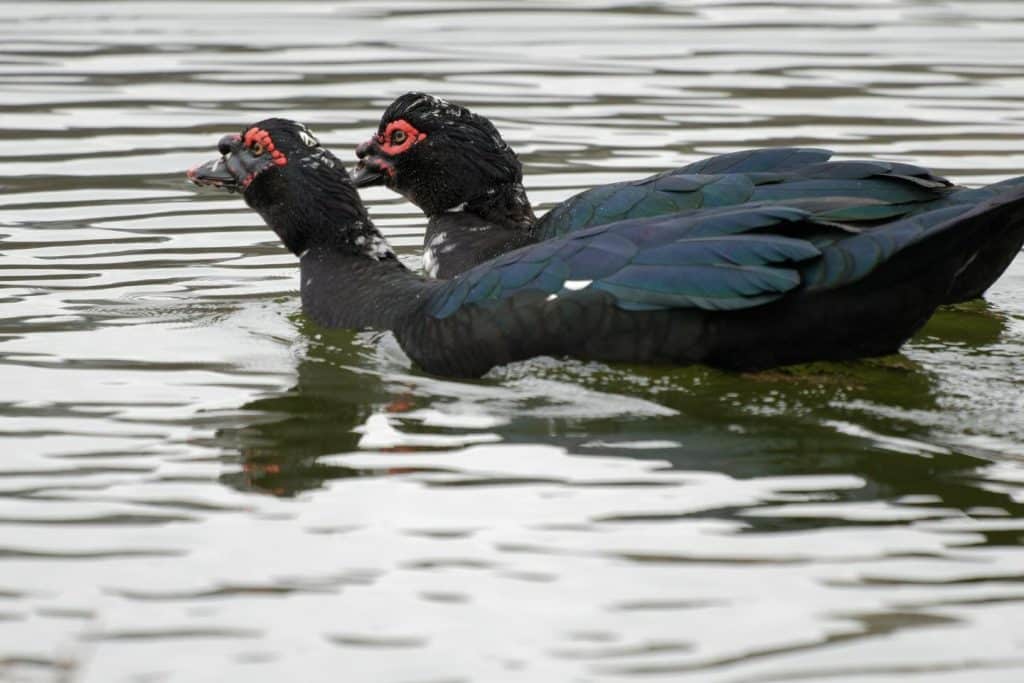
What Is A Muscovy Duck?
Wait, wait, wait.
Before we jump straight into the mating behavior of Muscovy ducks, let’s quickly remind ourselves of what a Muscovy duck is.
Muscovy ducks belong to the order of birds called Anseriformes (waterfowl) and the family Anatidae comprises of ducks, geese, and swans.
You can find wild Muscovy ducks throughout Central and South America.
Since the 1980s, their natural range has expanded northwards into North America. Here, small populations of wild Muscovies can be found in Texas.
These tropical birds can be found roosting in trees, often near a water source.
Wild Muscovy ducks are a glossy black color with large white patches on their wings. They often have a red, lumpy face, known as the caruncle.
Many countries across the globe have been domesticating Muscovy ducks for meat production.
This species of duck also produces rich and creamy eggs, another factor for their domestication. They also make for great pets.
Escaped domestic ducks have produced feral populations across much of North America, causing widespread environmental problems.
But enough on the introduction; let’s get into the nitty gritty of Muscovy mating behaviors.
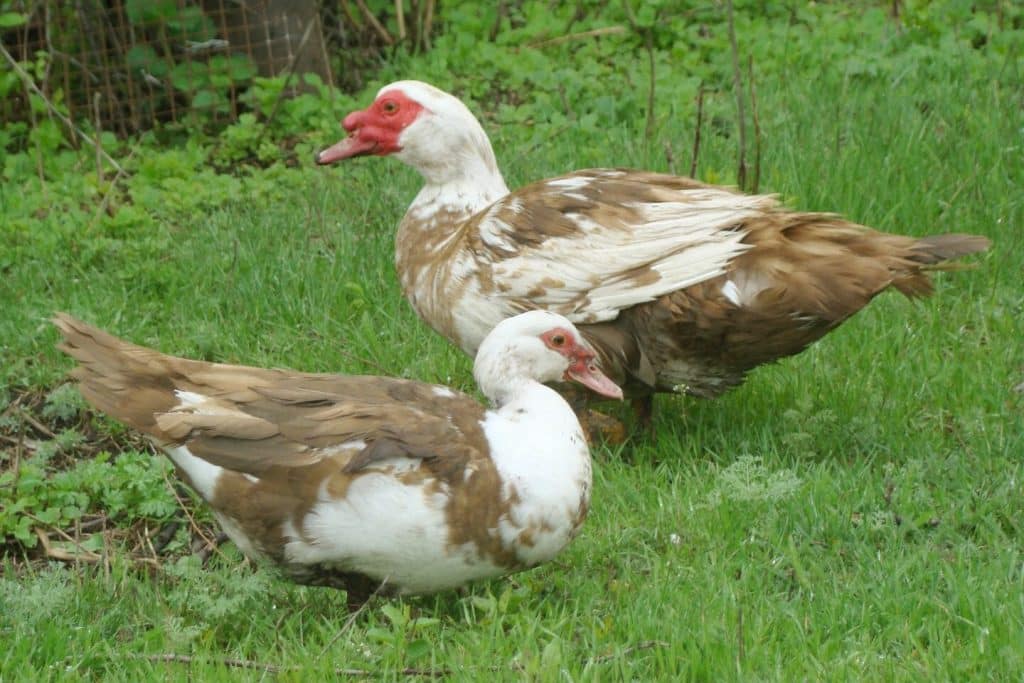
The Mating Behavior Of Muscovy Ducks
Somewhere in their evolutionary history, ducks, geese, and swans underwent a reproductive adaptation.
These lineages of birds do not have a cloaca.
Rather, males have evolved penises, and females have evolved vaginal tracts.
They have also evolved separate openings for urination (urethra) and defecation (anus).
Muscovy ducks have three separate orifices for reproduction, urination, and excretion.
There are considerable differences between male and female Muscovy ducks. However, for the purpose of this article, we will be exploring the sexual organs of Muscovy ducks.
Courtship Displays In Muscovy Ducks
Compared to other species of wild birds, Muscovy ducks do not spend much of their energy on elaborate courtship displays.
However, this isn’t to say males do not have some tricks up their sleeves.
Males have a crest of feathers on the crown of their heads.
Not only do males use these feathers as a dominating tactic against rival males, but they can also raise the crest at will to attract females.
This crest of feathers plays an important role in female choice. Males with the largest crest of feathers are selected for by females.
Another mating behavior displayed by males during the mating season is tail wagging.
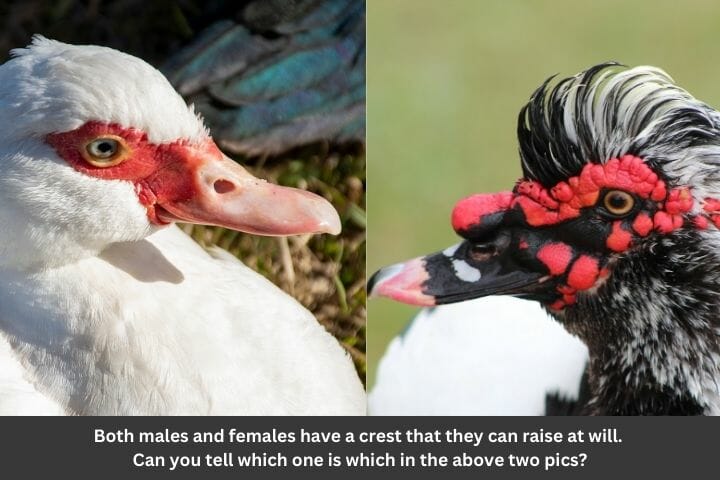
However, it is still unknown as to why males wag their tails during courtship. Is it simply communication? Or something more romantic..?
Copulation typically lasts just a couple of seconds – if that.
After a male Muscovy duck or drake, has mounted and positioned himself correctly, the duck penis bursts out of its internal housing.
On that note, it is worth mentioning that the phalluses of the Muscovy duck, and other aquatic waterfowl species, are kept internally until the moment of intercourse.
This is to protect the male genitalia from any external damage, especially in highly volatile dominance displays.
What Happens To Unsuccessful Males?
Within the Muscovy duck world, unwanted sex is a common occurrence.
A male who did not impress a female will try and force himself upon the female regardless, often showing aggressive tendencies.
While this seems wildly inappropriate to you and me, and before you get the violin out, females have adapted to this kind of forceful mating behavior.
Their vaginal tract has evolved twists, turns, and dead-ends to prevent any unwanted sperm from fertilizing their eggs.
In fact, female Muscovies can actively guide a male duck penis to a deliberate dead-end if she so desires.
Males, in response to this, have also adapted. Their penis is like a corkscrew.
Females, to counter this, have a vaginal tract that turns in the opposite way. And so, an evolutionary arms race materialized.
Only the hardiest males can mate with a female.
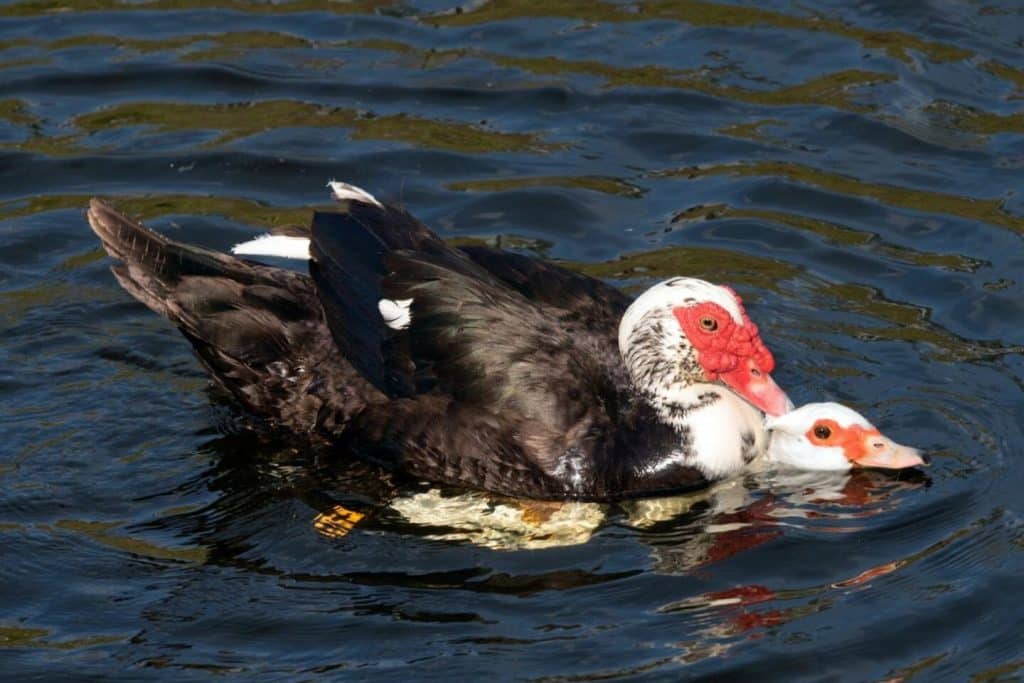
Mating Season In Muscovy Ducks
As with most animals, Muscovies are not sexually mature from the get-go.
Even within Muscovy ducks, males and females reach sexual maturity at different ages.
Females reach sexual maturity first. This is when they are approximately 28 weeks old.
For males, sexual maturity comes slightly later. This normally occurs when they are approximately 29 weeks old.
Of course, nature doesn’t always follow exact rules, so you may find Muscovies maturing at slightly different ages.
Once a Muscovy duck has hit sexual maturity, it can begin to mate.
Due to the tropical conditions of their native range, especially in South America, wild Muscovy ducks do not have a set breeding season.
However, if you are raising your own Muscovy ducks, the breeding season for domesticated Muscovies typically occurs from late Spring to early Fall (in the northern hemisphere).
In this season, days are often longer and warmer, with a plentiful supply of food.
During this time, you may notice some behavioral changes. This shouldn’t be a cause for concern.
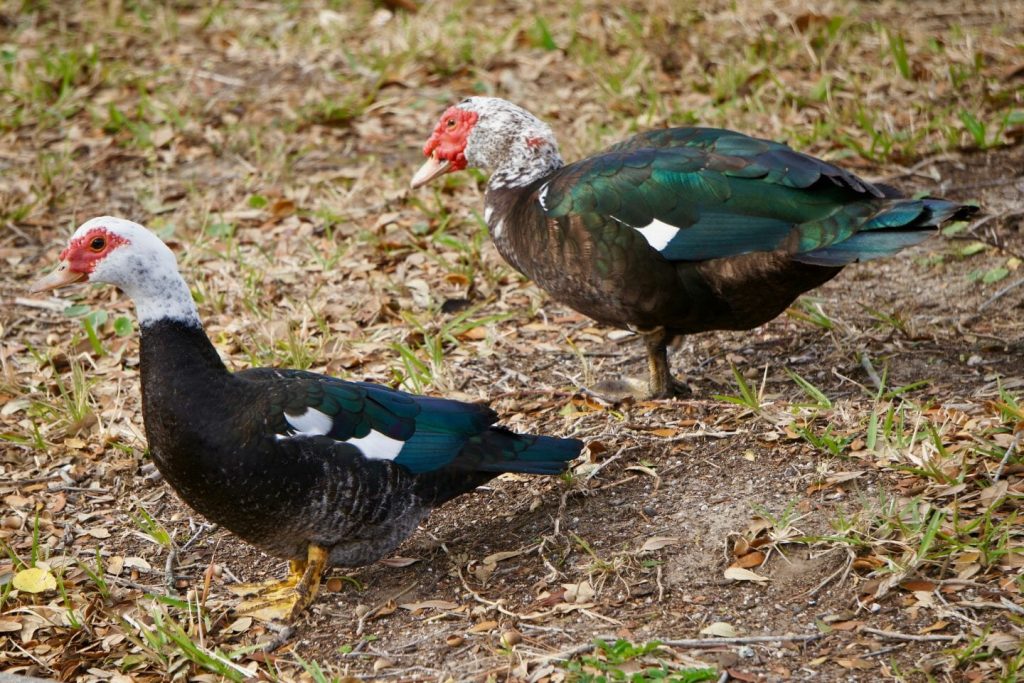
The most common behavioral change during the mating season is aggressiveness.
Males and females both show aggressive tendencies. However, males are typically more so.
In some cases, multiple males fight for dominance and may attack a female Muscovy simultaneously.
Oftentimes, this leads to injury and even fatalities in the female.
Are Muscovy Ducks Monogamous?
Many bird species throughout the animal kingdom will have just one mate for their entire lives. This is referred to as monogamy.
Polygamy, on the other hand, refers to animals that have multiple mates at any given time.
Muscovy ducks fall somewhere in the middle.
During the mating season, Muscovy ducks display seasonal monogamy. In other words, partners will stick together throughout the season.
After copulation, males will stay close to the nesting females.
Although male Muscovy ducks will play no role in the upbringing of the ducklings, they will guard the female and the developing clutch from rival males and potential predators.
Once the breeding season has finished and the ducklings have fledged, males will try their luck for a different female.
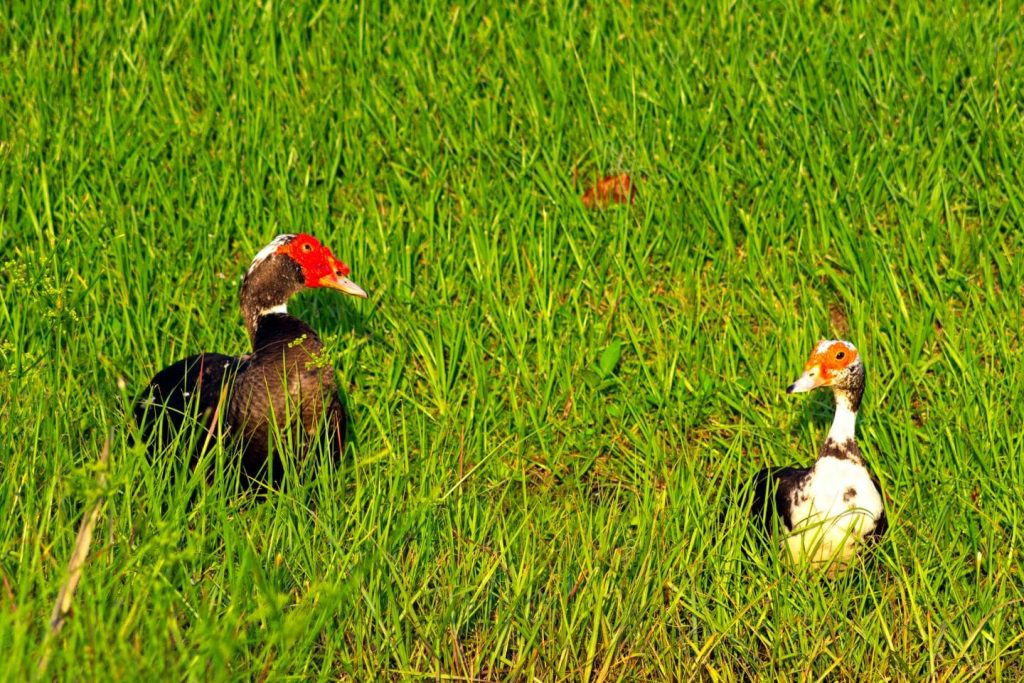
How To Set Up A Cage For A Muscovy Duck To Mate And Lay?
Before we explore the best ways to get a Muscovy duck to lay, it may be worth noting that you do not always need to breed Muscovies to produce eggs.
You can buy fertilized Muscovy duck eggs from a breeder and incubate them yourself using an incubator.
If you do have a flock of Muscovies, and you want them to mate together to lay eggs, there are some steps you need to consider to provide favorable conditions.
Space
You do not want too many ducks in a confined space. Allow for at least 15 feet, as a minimum, per duck you have.
You should try to provide an enclosed run, as well as an area of open space for the Muscovies to forage.
If the space is too small, you may notice your ducks being aggressive toward one another.
In a stressful situation, Muscovies will not mate, and you will not successfully hatch a clutch of eggs.

Nest boxes
Muscovy ducks nest in cavities within trees in the wild. This is to protect the developing clutch of eggs from ground predators.
In a captive setting, you should ensure you have designated nest boxes.
You should provide at least one nest box per female, but the more, the better.
Nest boxes should be slightly elevated and filled with substrates such as hay or sawdust.
As the female gets increasingly broody, she may add feathers to her nest.
Nest boxes do not need to be large. However, they need to be well protected from the elements and from predators.
This is to provide a safe and comfortable space for the females whilst she is broody.
Food and water
Broody Muscovies will spend a lot of time on their clutch of eggs.
However, unlike other domesticated fowl species, they do not spend all their time on their nests.
They will continue to seek food and water.
To increase the likelihood of your Muscovies mating and laying eggs, ensure you regularly clean and refill a water source for your birds to drink and bathe in.
But be warned; this can be a messy job.
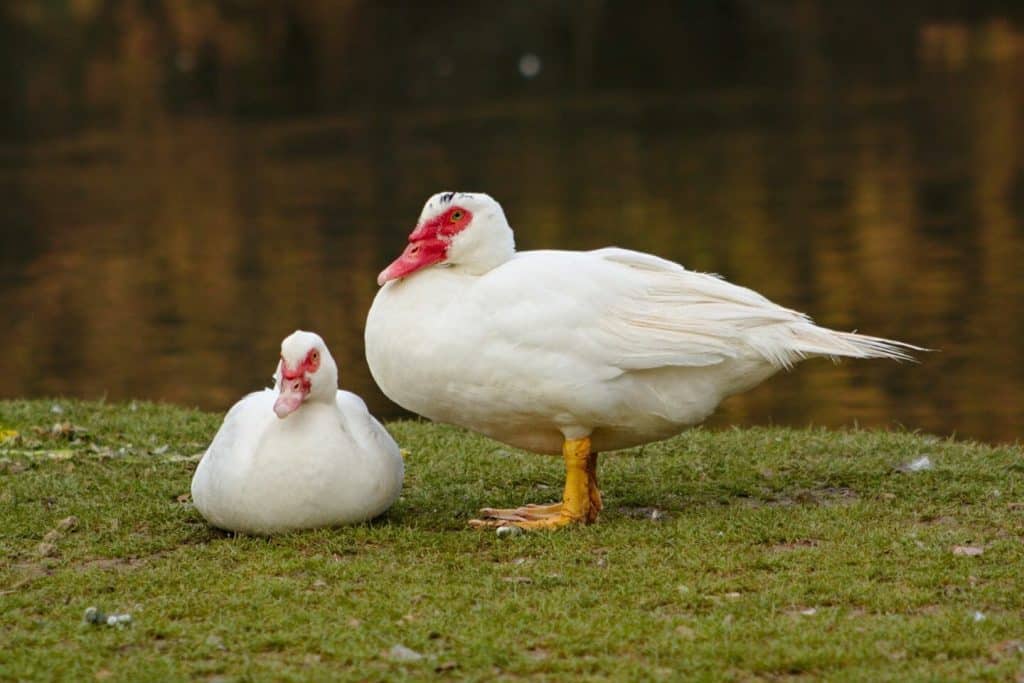
As for food, your Muscovy duck may need additional nutrients during the breeding season to keep up energy levels.
This is especially true in the colder months when there is a reduction in their natural insect prey.
You may find that the females may have more of an appetite.
Sometimes, however, they may refuse to eat. This is natural. Continue to provide a fresh range of food, including protein and fiber.
Frequently Asked Questions
Do Muscovy Ducks Choose One Mate?
During one season, the female will only choose one partner with whom she will fertilize her eggs.
Once the breeding season has come to an end, both male and female Muscovies will find new partners.
What Age Do Muscovy Ducks Mate?
Female Muscovy ducks also need to find suitable mates since this will ensure that their eggs will be healthy and more likely to hatch into healthy ducklings as well.
Usually, there are higher success rates when muscovy drakes court and mate with one specific hen each season.
How Do Muscovy Ducks Mate?
His corkscrew-like penis will then be ejected into the vaginal tract of the female, and sperm will be transferred.
In case of unwanted mating behaviors, female Muscovies can guide the male duck’s penis to a dead-end so his sperm does not fertilize her egg.
How Do I Encourage Muscovy Ducks To Mate?
Ensure your Muscovies have adequate space, nesting boxes, and food/water.
Make sure the nest boxes are secure and protected against the external environment.
Ensure there is an appropriate number of females to males. This should be around three females to every one male.
Wrap Up
The mating behavior of Muscovy ducks is unusual in the bird world.
Unlike most birds, they do not have a cloaca. Instead, they have sexual organs (a penis in males and a vaginal tract in females).
A male Muscovy duck has a corkscrew-shaped penis, while the female has a twisted vaginal tract. These are evolutionary adaptations in response to Muscovy mating behaviors.
To increase the chances of your Muscovy ducks mating, provide enough space and nest boxes for comfort and security.
Thank you for reading, and happy Muscovy mating.

